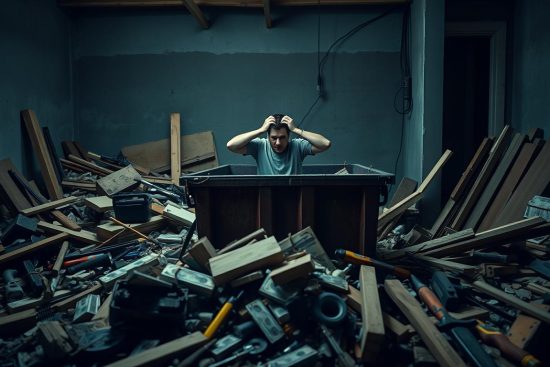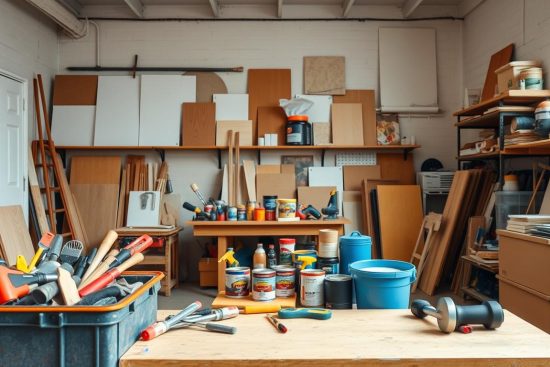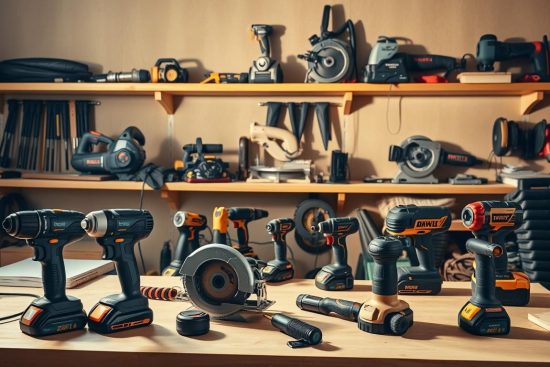Creating a workspace that fuels productivity doesn’t have to feel like a chore. According to design experts like Katie Schroder and Zoe Feldman, balancing aesthetic appeal with practical features is the secret to a truly effective setup. Whether you’re revamping a spare room or carving out a dedicated nook, smart upgrades can turn any area into a productivity powerhouse.

A spacious desk is non-negotiable for workflow efficiency, but don’t overlook lighting and storage. Strategically placed task lamps reduce eye strain, while built-in shelves or multifunctional furniture keep clutter at bay. For inspiration, explore home office designs that blend form and function seamlessly.
Ergonomic seating and tech-friendly layouts also play starring roles. As Feldman notes, “A well-designed workspace sparks creativity”—think adjustable chairs, cable organizers, or even voice-controlled devices. Small tweaks, like adding plants or artwork, can elevate your mood without sacrificing professionalism.
Key Takeaways
- Balance style and practicality to boost productivity.
- Prioritize a clutter-free desk area with ample surface space.
- Layer lighting to reduce fatigue during long work hours.
- Invest in storage solutions that adapt to your workflow.
- Integrate smart tech for seamless daily routines.
- Even compact spaces can excel with multifunctional furniture.
- Expert-approved layouts emphasize both comfort and inspiration.
Essential Home Office Elements for Maximum Productivity
Transforming your work area into a productivity hub requires strategic upgrades and thoughtful layout. Three core components—ergonomic furniture, layered lighting, and clutter-free systems—create a foundation for focused workdays.
Spacious Desk Areas & Task Lighting
A roomy desk surface (at least 60″ wide) lets you spread out projects without feeling cramped. Pair it with an adjustable lamp: Zoe Feldman notes, “Overhead lighting casts shadows—angled task lamps reduce glare by 40%.”
Comfortable Seating & Organized Storage
Choose chairs with lumbar support and breathable fabric—they’re worth the investment for 8-hour days. Built-in shelves or multifunctional furniture keep supplies hidden but accessible. As Katie Schroder advises, “Visible clutter distracts—closed cabinets maintain mental clarity.”
| Element | Purpose | Expert Tip |
|---|---|---|
| Spacious Desk | Facilitate workflow | Minimum 30″ depth for monitors |
| Adjustable Lamp | Reduce eye strain | 500-lumen bulbs for detail work |
| Modular Storage | Hide clutter | Use vertical wall space |
Melissa Oholendt adds a pro tip: “Add a plant or framed art behind your desk—it polishes video call backgrounds without looking staged.” Balance practicality with personality to craft a space that works as hard as you do.
Optimizing Limited Space for a Productive Workspace
Big results don’t require big square footage—smart design turns even tight spots into productivity zones. “A functional setup isn’t about size, but how you use every inch,” says designer Zoe Feldman. With clever storage and adaptable furniture, compact areas can outperform sprawling rooms.
Efficient Use of Small Areas
Start by reimagining underused corners. A 24-inch deep floating desk fits perfectly beside windows or in alcoves. Pair it with wall-mounted shelves to keep supplies overhead but within reach.

Multifunctional pieces are game-changers. Think foldable desks that tuck against walls or ottomans with hidden compartments. One client transformed a closet into a work nook using sliding doors and pegboards for organization.
| Feature | Benefit | Example |
|---|---|---|
| Wall-Mounted Desk | Saves floor space | IKEA’s SKARSTA |
| Foldable Furniture | Creates flexibility | Murphy desk with fold-down surface |
| Vertical Storage | Maximizes height | Floating shelves above monitors |
Keep essentials visible but tidy. Use drawer dividers for pens and sticky notes, or try magnetic strips for tools. As Feldman advises, “Prioritize what you touch daily—store the rest.” A Brooklyn designer’s 50-square-foot nook proves it: her rolling cart holds printers, while a pegboard displays weekly goals.
Balance is key. A slim desk feels spacious with a mirror behind it, and neutral colors expand visual boundaries. Remember: small spaces thrive on intention, not excess.
Innovative Renovation Ideas to Enhance Style and Function
Blending aesthetics with utility creates workspaces that inspire. Design-forward upgrades can elevate both motivation and efficiency, turning ordinary areas into creative hubs. As designer Melissa Oholendt puts it: “Your environment should reflect your personality while serving daily needs.”
Inspiring Design Trends for a Motivating Environment
Textured accent walls add depth without sacrificing square footage. Try grasscloth wallpaper or reclaimed wood panels—they’re Zoom-meeting gold. Pair them with sculptural lighting fixtures, like geometric pendants, to cast artistic shadows.
Curated gallery walls offer visual stimulation while hiding uneven surfaces. One designer used floating shelves to display client mood boards alongside framed prints. “It turns functional storage into a focal point,” she notes.
| Design Element | Function Boost | Style Impact |
|---|---|---|
| Accent Walls | Define work zones | Add texture/color |
| Sculptural Lighting | Reduce glare | Create drama |
| Gallery Walls | Organize inspiration | Showcase personality |
Don’t overlook existing architectural features. Exposed beams or arched niches make unique backdrops. One Brooklyn renovator turned a fireplace nook into a reading corner with built-in charging stations.
Balance bold style choices with breathing space. Neutral desks let vibrant art pop, while patterned rugs anchor the room. As Oholendt advises: “Edit ruthlessly—every piece should earn its place.” Your office feels cohesive when decor supports both workflow and joy.
Smart Storage and Organizational Solutions
Strategic storage isn’t just about tidiness—it’s about creating a system that supports your workflow. Designers like Katie Schroder champion solutions that merge practicality with aesthetics. “Built-in cabinetry hides clutter while elevating the room’s style,” she notes. This approach keeps essentials within reach but out of sight, turning chaos into calm.

Creative Storage Solutions and Built-Ins
Custom cabinetry maximizes vertical space without crowding the floor. Try floor-to-ceiling shelves with closed cabinets at the bottom and open display areas up top. For smaller rooms, recessed nooks beside desks hold printers or files seamlessly.
Multipurpose furniture shines here. Think ottomans with hidden compartments or desks featuring built-in drawers. One designer added sliding panels to a bookshelf—behind them? Charging stations and snack stashes for marathon workdays.
Tips for Keeping Your Workspace Clutter-Free
Start with a daily 5-minute reset. Toss loose papers into labeled trays and corral cords with adhesive clips under the desk. Use drawer dividers for pens, sticky notes, and tech accessories—no more digging through junk piles.
Schroder’s golden rule? “If you don’t use it weekly, store it elsewhere.” Wall-mounted rails with baskets keep reference materials handy but off your main surface. For visual appeal, style open shelves with plants or framed photos between functional items.
| Solution | Function | Example |
|---|---|---|
| Floating Shelves | Display & Storage | IKEA LACK series |
| Magnetic Boards | Organize Tools | Steel panels with clips |
| Rolling Carts | Flexible Storage | 3-tier metal units |
Remember: an organized space fuels focus. With these tweaks, even compact areas feel spacious and intentional.
Multipurpose Spaces: Conversion Ideas for Extra Work Areas
Dedicated work areas aren’t confined to traditional rooms—creativity unlocks possibilities. Underused spaces like attics, garages, or awkward corners can become productivity goldmines with smart conversions. As designer Bethany Adams notes: “Even drafty attics transform into cozy nooks with proper insulation and task lighting.”
Converting Attics, Garages, and Unused Rooms
Start by assessing overlooked areas. Attics benefit from skylights and floating desks to maximize headroom. Garages work well with fold-down desks and modular storage carts. Rebekah Zaveloff shares: “A client turned a 5’x7’ closet into a sleek office using mirrored doors and pegboard organizers.”
| Space | Conversion Tip | Style Hack |
|---|---|---|
| Attic | Add warm LED lighting | Use light-colored paint |
| Garage | Install soundproof panels | Add indoor/outdoor rug |
| Spare Corner | Use a kidney-shaped desk | Hang vertical planters |
Integrating Home Office and Multi-Use Zones
Blend workspaces with other household functions seamlessly. Designer Sallie Lord transformed a laundry room by adding a pull-out desk above appliances. Try these ideas:
- Use room dividers like bookshelves to separate work zones
- Choose foldable desks in guest rooms for dual purposes
- Install hidden outlets inside cabinets for clean lines
Adams suggests: “Paint your desk wall a bold color—it defines the area without physical barriers.” For shared spaces, rolling carts store supplies during family time. With thoughtful planning, your work area adapts to daily life while keeping style and function balanced.
Conclusion
Crafting a home office that thrives starts with marrying smart design to your unique workflow. From ergonomic setups that support long hours to clutter-free systems that spark focus, every detail matters. Experts like Zoe Feldman remind us: “Productivity blossoms where practicality meets personality.”
Even compact spaces shine when optimized. Think vertical storage in tight corners or foldable desks in guest rooms. These solutions prove limited square footage can’t limit creativity—only enhance it. A guest room doubling as a work nook? Absolutely achievable with sliding partitions.
Your environment should evolve with you. Bold accent walls or sleek built-ins aren’t just stylish—they’re tools for staying inspired. One designer’s secret? “Treat your desk like a command center—functional, but infused with what motivates you.”
Ready for change? Start small: reorganize one drawer or convert that spare room corner. Tiny tweaks yield big momentum. Your workspace isn’t just where you work—it’s how you thrive.


